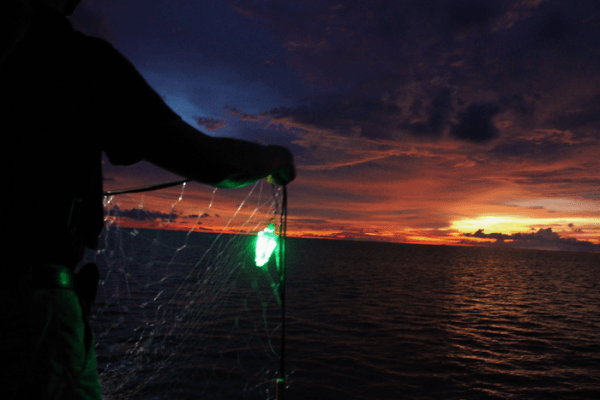In a win-win for commercial fisheries and marine wildlife, researchers have found that using lighted nets greatly reduced accidental bycatch of sharks, rays, sea turtles, and unwanted finfish.
Publishing their results in the journal Current Biology, the researchers found that lighted gillnets reduced total fisheries bycatch by 63 percent, which included a 95 percent reduction in sharks, skates, and rays, an 81 percent reduction in Humboldt squid, and a 48 percent reduction in unwanted finfish, while maintaining catch rates and market value of target fish.
Authors of the study include Jesse Senko, Assistant Research Professor, Arizona State University; Hoyt Peckham, Director of Small-scale Fisheries, Wildlife Conservation Society; Daniel Aguilar-Ramirez, Fisheries Biologist, National Fisheries and Aquaculture Institute of Mexico; and John Wang, Fisheries Ecologist, NOAA Fisheries.
Gillnets are one of the most extensively used fishing gear in coastal regions throughout the world’s oceans, but often catch other animals not targeted by fishers. These include endangered, threatened, and protected species such as sharks, sea turtles, marine mammals, and seabirds, but also other fish species as well as non-marketable juvenile target fish species. These animals are often dead, injured, and dumped overboard. The incidental capture of non-target species – known as “bycatch” – in coastal gillnet fisheries has contributed to declines in endangered species worldwide and has also impacted coastal ecosystems.
Read more at Wildlife Conservation Society
Image: A new study finds that using lighted nets greatly reduced accidental bycatch of sharks, rays, sea turtles, and unwanted finfish. (Credit: NOAA Fisheries)


